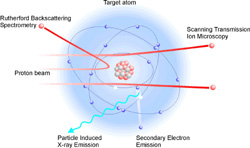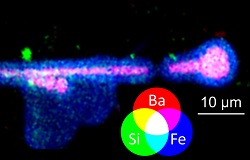Skin penetration of TiO2 nanoparticles in sunscreens
The last 10 years have seen an increase in the use of nanoparticles in body care and household products. Manufacturers use TiO2 in sunscreen because of its high refractive index, its strong UV light absorbing capabilities and its resistance to discolouration under ultraviolet light. Researchers from the NANODERM project used standard tape stripping techniques of the outer skin layer to study the penetration of TiO2 nanoparticles into skin. Novel microscopy pilot studies using ion beam analysis allowed scientists to visualise the penetration pathways of nanoparticles in excised skin. The advantage of this approach was that only a few steps were needed to prepare samples. Furthermore, larger samples could be studied to achieve an overview of large areas, as well as zooming in on an area of particular interest. However, the technique was time consuming and unable to visualise individual nanoparticles. The conventional method of high-resolution transmission electron microscopy (HRTEM) was able to visualise individual particles but suffered from a limited field of view. It also required far more steps in the preparation of samples. The NANODERM project also applied the technique of autoradiography for the first time to dermal penetration studies. The team used TiO2 and the radiolabel 48-V to track the passage of nanoparticles in skin cross-sections. Researchers applied different formulations of sunscreen and used different skin types, pretreatments of skin and exposure times. The results showed that in healthy skin titanium was detected in the outermost layers. None of the 500 or so images demonstrated a clear pathway through the skin. The TiO2 nanoparticles had penetrated the outermost layers of skin through mechanical action and no diffusive transport had taken place. Deep penetration had occurred into the hair follicles, but this would be cleared through the natural excretion of sebum. There was no clear evidence that nanoparticles affected cells, however, NANODERM recommended that sunscreen should not be applied to open wounds. They also concluded that no health effects were expected from the application to healthy skin of sunscreens containing TiO2 nanoparticles.







